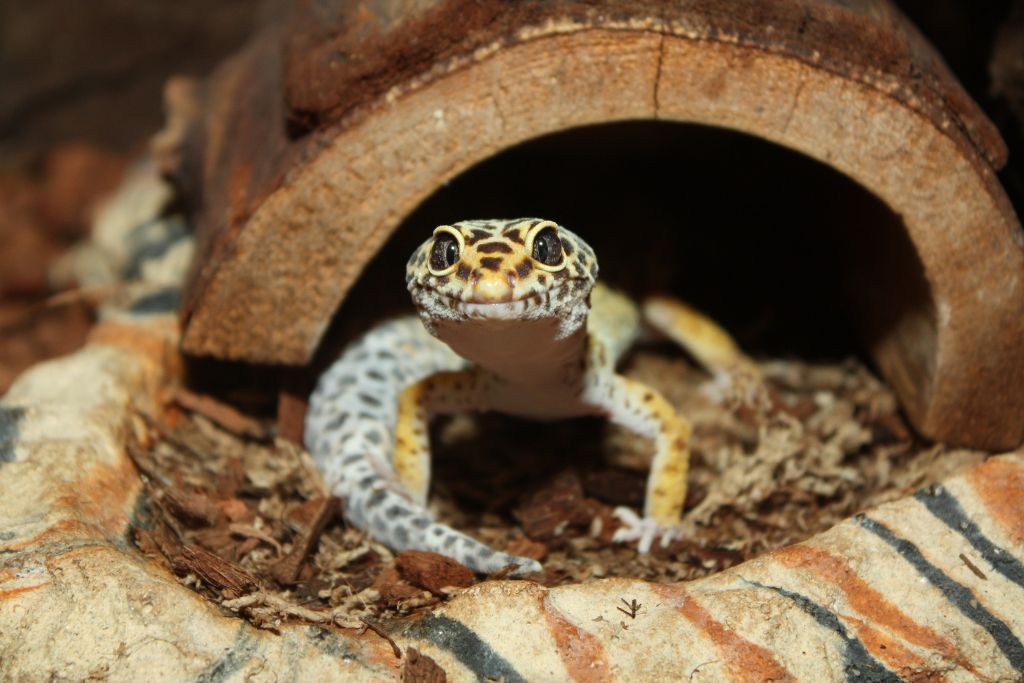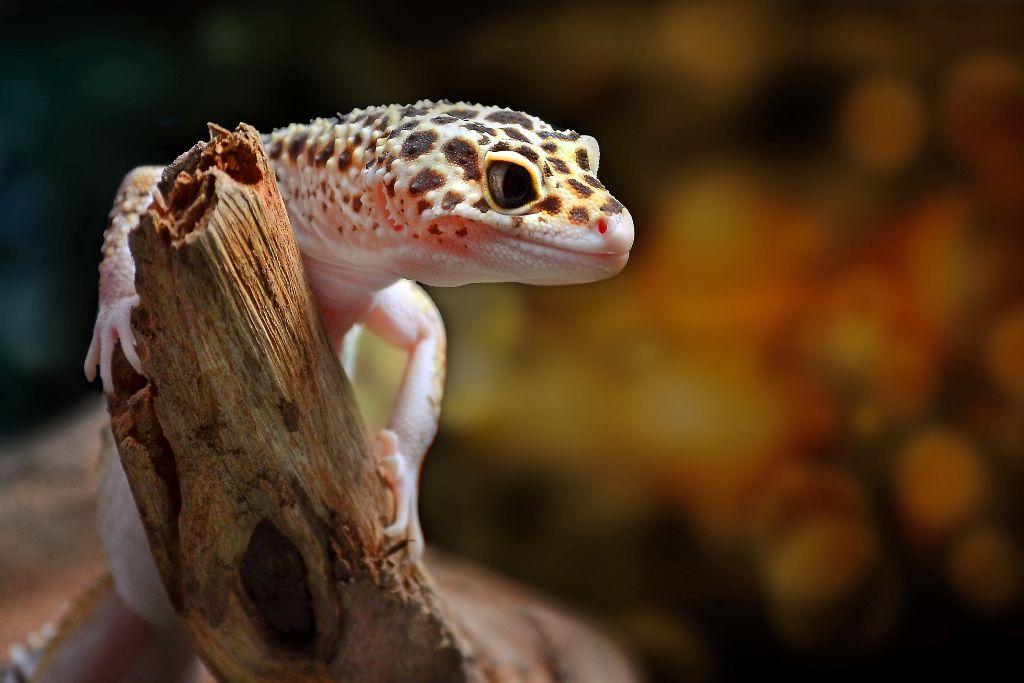Does the leopard gecko have the ability to hear? If yes, how do they function in their environment through sound? What role do their ears play in their survival? Are there myths embedded regarding leopard gecko hearing that need to be addressed?
There are different misconceptions about leopard gecko hearing capacity. People believe these reptiles do not have ears and cannot hear. Some also assume that their strength is their sense of touch, compensating for their hearing deficiency. Yet, the given myths may not be accurate to Gecko’s hearing capabilities.
This article aims to provide factual information about gecko hearing capacity. The topic will address different myths by giving real insights. Understanding how geckos hear sounds enables you to appreciate them more.
The Anatomy Of Leopard Geckos

Leopard geckos are small reptiles measuring around 6 to 10 inches and are known for their distinct physical appearance. They originated in Afghanistan, Pakistan, and India, possessing a slender body and a long tail. Geckos exhibit vibrant coloration ranging from yellow to pale orange. They also have black spots all over their body.
Regarding sensory organs, leopard gecko’s eyes are on the side of their heads. This makes them see things widely and from a broader perspective. These small reptiles are said to be active during the night, making them crepuscular creatures.
In addition, leopard gecko ear holes, or eardrums, are the sensory structure that allows them to detect sounds and vibrations. It is located behind their eyes, making them sensitive to nearby movements and sensing potential prey.
Do Leopard Geckos Have Ears?
Like any other reptile, leopard geckos do not have external ears. According to the Journal of Comparative Physiology A, published in 2000, leopard geckos lack external ears. But can leopard geckos hear? Based on the study, geckos have inner ear structures adapted to listen to sounds and vibrations.
Leopard geckos need essential parts of their inner ears to do well in their natural surroundings. Being able to hear and talk to other reptiles is possible because geckos have sensitive hearing.
How Leopard Geckos Perceive Sound
Leopard geckos are distinct reptiles renowned for their incredible sensory adaptation. Understanding how they hear sounds is essential to knowing their sensory capabilities. Listed below are the different ways leopard geckos perceive sound:
- Vibration Detection: Using sensors indicated in their skin and bones, geckos can pick up ground vibrations. These vibrations allow them to sense nearby movement and threats.
- Tactile Sensitivity: Leopard geckos are known to have sensitive skin. With this, they can feel vibration throughout their entire body. The beats they feel in their body enable them to detect incoming predators or prey.
- Bone Conduction: Did you know that a gecko’s bones can conduct vibrations effectively? Even without ears, geckos can feel sound waves from the ground.
Compensating For The Lack Of Traditional Ears: The Role Of Other Senses

- Vision: Since geckos have excellent night vision, they can still spot prey and threats easily. Making them survive despite their hearing limitations.
- Olfactory Sense: Geckos can also smell, which lets them sense chemicals in the environment. Through smelling, they can locate food sources and potential mates.
- Thermosensation: Using special sensors, geckos can detect cool or warm environments. This will guide them to find what temperature works for them.
The Importance Of Sound Perception
Leopard gecko’s sound perception is essential to communicating, hunting, and avoiding environmental threats. Their auditory senses are needed for their survival since geckos are nocturnal creatures. Soft clicks and chirps are sounds they use to connect with possible mates.
As for hunting purposes, geckos depend on sounds to locate prey, like insects and arthropods. They can detect movements and sounds produced by prey, which allows them to act or avoid them accordingly.
In their natural habitat, geckos should know the sounds of their environment. Geckos must watch for leaf movement and insect chirping. They must be observant of the sounds produced by nocturnal animals.
Captive Care Considerations
How geckos perceive sound in captivity depends on the care provided inside the terrarium. Here’s some practical advice you can apply to meet their auditory and overall needs under your supervision:
- Provide a Quiet Environment: Avoid placing your geckos near loud-producing objects. This is because leopard geckos are sound and vibration-sensitive.
- Choose a Suitable Substrate: Cut gecko noise as they move around using substrate materials. Invest in paper towels, reptile carpets, and sand to create a peaceful gecko space.
- Proper Temperature and Humidity: A perfect range of enclosure temperatures must be applied. This will provide comfort and stress reduction for your gecko.
- Use Soft Lightning: Geckos are known to be nocturnal reptiles. You must use soft lighting to provide them with a natural environment.
- Offer Hiding Spot: Have them experience the feeling of being secured by providing hiding spots and shelters. This will also reduce their stress as they use this feature in their enclosure.
- Limit Handling: Avoid excessive gecko handling, which can stress them out. Always handle your pet with care because they have susceptible skin.
- Maintain Cleanliness: Geckos don’t want a dirty and smelly environment. Make sure to clean their enclosure regularly to avoid stress and discomfort.
- Monitor Tank Mates: Avoid potential injuries and stress by ensuring harmonious relationships between multiple geckos inside one enclosure.
- Provide a Balanced Diet: Provide your geckos with the nutrition they need. Talk to a reptile expert to ensure you’re feeding them correctly.
- Offer Enrichment: Provide stimulating toys and objects to enhance your gecko’s senses. Put climbing structures, branches, and shallow dishes with water intended for soaking.
- Keep Noise Levels Low: Do leopard geckos like music? It’s essential to cut off loud music, conversation, and other sounds within the area of your pet gecko.
- Regular Veterinary Check-Ups: Schedule your gecko for annual veterinary check-ups. This will ensure their overall health and address health issues immediately.
Comparing Reptile Hearing To Mammalian Hearing

Mammalian hearing mechanisms involve external ears to capture and hear sound waves. They have three tiny bones in the middle ear called ossicles that send sounds to the fluid-filled cochlea in the inner ear. Hair cells in the cochlea detect the vibration and transmit the electrical signals to the brain to interpret.
Just like any other reptile, can leopard geckos hear? In general, reptiles can hear more narrowly than mammals. They do not have external ears. But they have distinct ways of detecting the vibrations and sounds their environment produces.
Mammals have evolved their hearing mechanisms in a more complex way than reptiles. Differences in hearing capacity are based on animals’ ecological niches and lifestyles. Their comparison enables you to discover the diversity of adaptation in the animal kingdom.
Conclusion
You need to discover the specialized sensory adaptations of leopard geckos. By doing this, you will be able to know how to deal with them and deepen your knowledge of the gecko’s actions and behaviors.
Geckos have distinct ways of perceiving their environment. They may not have external ears but can still thrive and survive using their extraordinary hearing capacity.
FAQs
Do Leopard Geckos Have Ears?
Leopard geckos do not have external ears. They have internal ear structures intended to hear vibration and low-frequency sounds.
Can Leopard Geckos Hear?
Yes, leopard geckos can hear. Yet their hearing mechanisms are different from those of mammals. Geckos use their internal ear structures to hear noises in their environment.
Are Geckos Ears Sensitive?
Yes, their ears are sensitive. They have degrees of sensitivity in their ears, especially for vibrations and low-frequency sounds.





